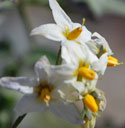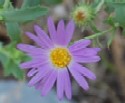Field Trip and Wildflower Report from Peralta: September 12, 1999
I found sixteen common desert birds during my brief two-hour hike:
-
Canyon Wren
-
Ladder-backed Woodpecker
-
Scrub Jay
-
Green-tailed Towhee
My favorite for the trip were the Green-tailed Towhees, which appeared especially green. These birds were in migration - they do not breed in the Sonoran Desert, but rather arrived from the north from places like Northern Arizona, Colorado and Utah where they nest and breed. Already the Turkey Vultures were finding strong thermals rising off the rapidly heating rock faces. I began sweating almost at once, even though I was still shaded by the steep canyon walls.
But the heat is a good thing. Normally this is a very popular hike, and just finding a parking spot at the trailhead can be difficult ... when the weather is nice. So I endure the heat. The desert is beautiful. There are many butterflies and some wildflowers as well. Thoughts of city and work-a-day are wiped away.
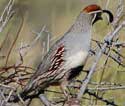
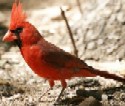




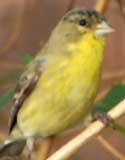
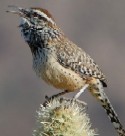
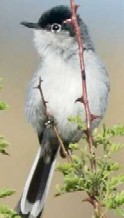

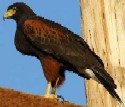
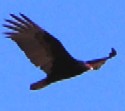
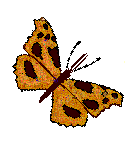 The most abundant butterfly was the
Leilia Hackberry Butterfly. These golden brown butterflies alight
especially on pebbles and bare spots in the trail, flushing and quickly
returning as the hiker passes. About a mile and a half below the trailhead the
road crosses a wash (name for a dry-looking desert watercourse). An abundance
of subsurface water supports a grove of Seep Baccharis. Standing 4 to 6 feet
tall they are topped with clusters of whitish flowers swarming with
butterflies! Snout Butterflies (pic above), rich tawny
Queens, orange-yellow
Sleepy Sulfurs, bright yellow
Dogface Butterflies, and
Great Purple Hairstreaks among them. Other butterflies seen along the
trail were the Gray Hairstreak,
Dainty Sulfur, Mexican Sulfur,
Aurantiacus Skipperling, and
Leda Hairstreak.
The most abundant butterfly was the
Leilia Hackberry Butterfly. These golden brown butterflies alight
especially on pebbles and bare spots in the trail, flushing and quickly
returning as the hiker passes. About a mile and a half below the trailhead the
road crosses a wash (name for a dry-looking desert watercourse). An abundance
of subsurface water supports a grove of Seep Baccharis. Standing 4 to 6 feet
tall they are topped with clusters of whitish flowers swarming with
butterflies! Snout Butterflies (pic above), rich tawny
Queens, orange-yellow
Sleepy Sulfurs, bright yellow
Dogface Butterflies, and
Great Purple Hairstreaks among them. Other butterflies seen along the
trail were the Gray Hairstreak,
Dainty Sulfur, Mexican Sulfur,
Aurantiacus Skipperling, and
Leda Hairstreak.
Credits: Butterfly Photos Bruce Walsh
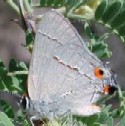
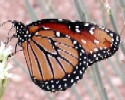

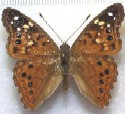
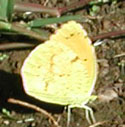
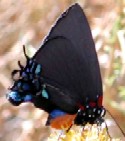
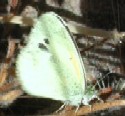
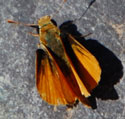
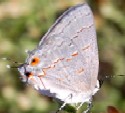
Sponsored Links
Wildflowers were not easily found: The blistering hot days quickly dry up moisture near the soil surface so that annuals just can't grow much. Most flowers were of perennial species, such as the Seep Baccharis. Also at the wash were the first of the fall Alkali Golden Bush. On up the trail the most common flower was that of the twisty Janusia Vine. The flowers are yellow, with five petals. A few purple-rayed, yellow-centered asters and the yellow-flowered Spiny Haplopappus (pictured with the dainty sulfur) were blooming.
Easily the most fascinating flower was the Snap Dragon Vine - a twiny vine with bright coral pink flowers. Soon the sun was above the canyon wall and beating down on me. Where the trail crosses the creek bed there are massive Sugar Sumacs to provide welcome shade. These magnificent trees have tough shiny leaves about three inches long and exude a pungent resin into the air. The odor seemed a bit like urine to me.
There was an abundance of Dragonflies (such as the Big Red Skimmer) having emerged from the temporary pools that collect in the canyon bottom ... they were more than welcome as there were also some bothersome mosquitoes and eye gnats for them to prey upon. Hopbush was blooming heavily, but the all green flowers would go unnoticed by the casual observer. Other flowers included Four-winged Saltbush, Nightshade, Red Spiderling, Rattlesnake Weed, and Indian Mallow. Several grass species with very attractive inflorescences were also seen along the trail.
After two hours my half-gallon of water was gone and I was soaked with sweat. An invigorating hike and an abundance of desert nature watching made for a perfect start of my Sunday!
